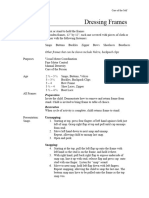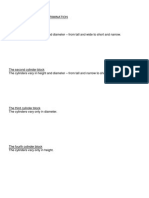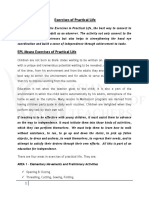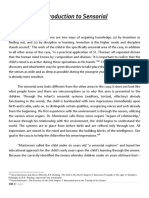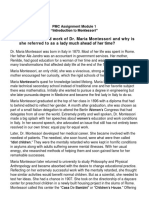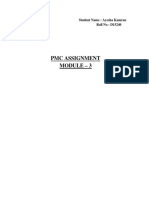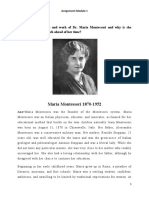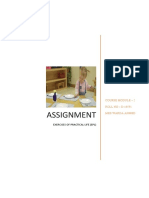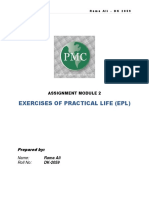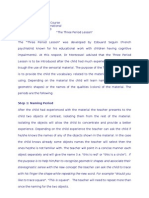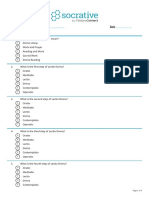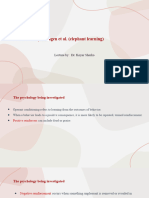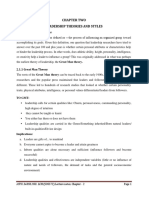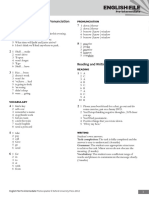0% found this document useful (0 votes)
2K views8 pagesSection A EPL
The document outlines various Montessori activities aimed at developing fine motor skills, concentration, and independence in young children. Activities include grasping, bow tying, buckling, and practical life exercises like pouring and whisking, each with specific components, aims, and methods of introduction. These activities foster essential skills through hands-on experiences and promote a sense of accomplishment and responsibility.
Uploaded by
AmirunnisaCopyright
© © All Rights Reserved
We take content rights seriously. If you suspect this is your content, claim it here.
Available Formats
Download as PDF, TXT or read online on Scribd
0% found this document useful (0 votes)
2K views8 pagesSection A EPL
The document outlines various Montessori activities aimed at developing fine motor skills, concentration, and independence in young children. Activities include grasping, bow tying, buckling, and practical life exercises like pouring and whisking, each with specific components, aims, and methods of introduction. These activities foster essential skills through hands-on experiences and promote a sense of accomplishment and responsibility.
Uploaded by
AmirunnisaCopyright
© © All Rights Reserved
We take content rights seriously. If you suspect this is your content, claim it here.
Available Formats
Download as PDF, TXT or read online on Scribd
/ 8



